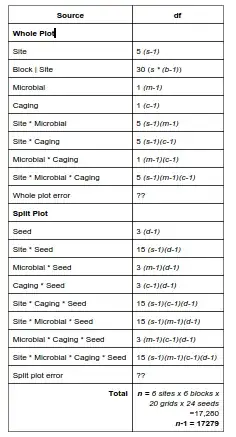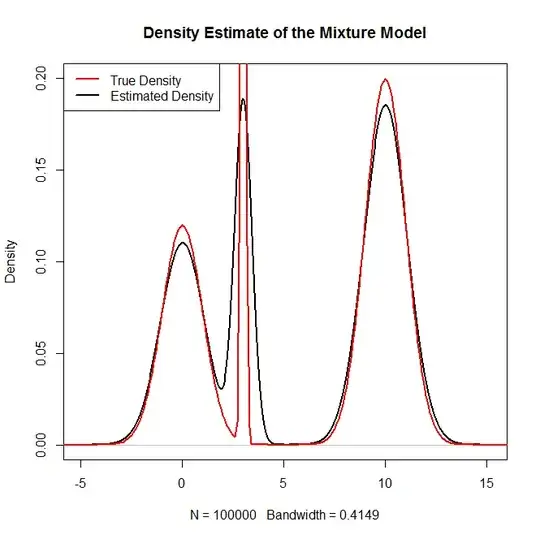Hopefully I can explain this clearly. Reference diagram below if needed.
I'm planning a large field experiment that I think will have to be a split plot design.
There are six sites (outlined in red), each with six blocks (separated by green lines). (Sites are of interest and are not random.) In each block there are 20 grids, with five replicates of each of four treatment combinations (from a 2 x 2 factorial of microbial x caging). Each treatment combination is indicated by the colored squares at the top of the diagram. Each grid in the block gets randomly assigned a treatment combination; I think these grids are my "whole plots"...
Within the "cells" of each grid (see inset), there are seeds from 4 sources, each replicated 6 times. (Seed source is also of interest, not random). Each of the 24 cells gets randomly assigned one seed. Each seed source is indicated by the colored circles at the top of the diagram. I think these cells are my "split plots"...
Now, when I'm thinking about the ANOVA table for this...I'm getting confused, and don't know how to calculate the degrees of freedom for error in the whole plot and split plot. And am I thinking about this the right way? Does it seem like adequate replication? (Though I realize that will depend on effect sizes.) I realize the higher level interactions will be hard to interpret but want to sketch out the whole ANOVA table first. What I have at the moment is this:

